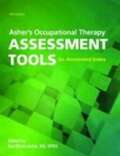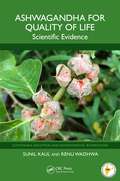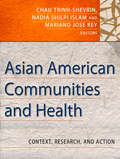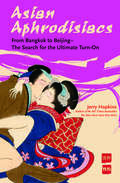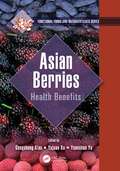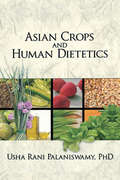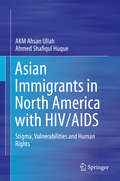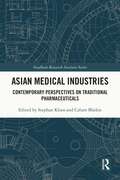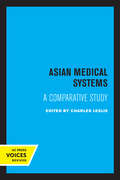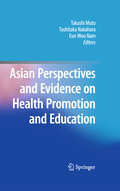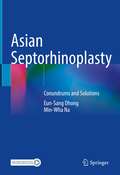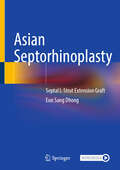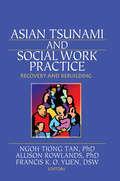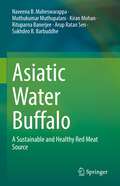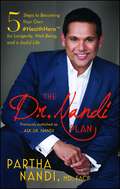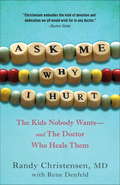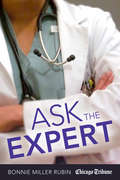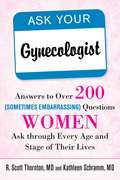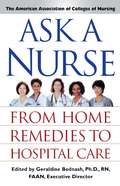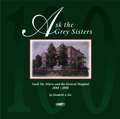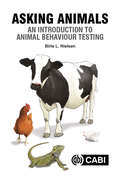- Table View
- List View
Asher's Occupational Therapy Assessment Tools: An Annotated Index
by Ina Elfant AsherNearly 600 instruments are reviewed in this new edition of occupational therapy’s classic publication, including many developed by occupational therapists. An international team of academicians, clinicians, researchers, and advanced-degree candidates working in various practice arenas collaborated on this update. The assessment profiles―which include title, authors, format, purpose, population, time required to administer, setting or position, materials or tools, brief description, interpretation, reliability and validity, source, additional references, cost, and sample―will be useful to clinicians and students, who must choose appropriate tools for clinical practice; to educators, who select assessment procedures for the classroom; and to researchers, who will find instruments that are designed for research purposes or will benefit from further investigation. This edition includes a matrix of all assessments, showing content areas and age ranges of each instrument.
Ashgate Handbook of Endocrine Agents and Steroids (Routledge Revivals)
by G.W.A MilneThis title was first published in 2000: Treatment of endocrine disorders is an important branch of medicine and many drugs have been developed for use in this area. Endocrine disorders and the drugs used to treat them are quite diverse, ranging from iodine-containing thyroxine analogs used to treat hypothyroidism, to steroid androgens, progestins and estrogens.This Handbook contains records for all the major drugs currently used in endocrinology. Monographs are provided for 818 endocrine agents and steroids. For each main entry, the following information is provided: the chemical name and a list of trade names and synonyms; the Chemical Abstracts Service (CAS) Registry Number; the European Inventory of Existing Commercial Chemical Substances (EINECS) Number, and the Merck Index (12th edition) Number. The physical properties of each compound are described and the known biological activity and indicated applications are presented. The structure of each compound is provided, together with a summary of the acute toxicity data associated with it, and the manufacturers and suppliers of the drug are also given. Indexes, including a master index of names and synonyms, are appended.
Ashwagandha for Quality of Life: Scientific Evidence (Sustainable Industrial and Environmental Bioprocesses)
by Renu Wadhwa Sunil KaulThis book offers a comprehensive overview of the scientific evidence supporting the diverse health benefits of Ashwagandha. Each chapter delves into specific aspects, exploring its effects on stress management, cognitive function, physical performance, immune system support, sleep quality, and hormonal balance. Through an evidence-based approach, the text aims to bridge the gap between traditional wisdom and modern scientific understanding, presenting Ashwagandha as a promising herb for enhancing quality of life. Ashwagandha for Quality of Life: Scientific Evidence begins by highlighting the origin and botanical characteristics of Ashwagandha and explores the wide range of its traditional and modern applications. By identifying the main active compounds and their functions, readers gain insight into the herb's potential physiological effects. Further, the book investigates Ashwagandha's potential for preventing and treating COVID-19. The book is intended for general readership, herbalists, naturopaths, alternative medicine practitioners, and life science/medical students and researchers to gain a comprehensive understanding of Ashwagandha's potential in improving health and well-being, while also emphasizing the importance of quality and chemotyping for optimal benefits.
Ashwagandha: Potential Drug Candidate from Ancient Ayurvedic Remedy
by Dilip Ghosh and Benny AntonyFor over 3,000 years, ashwagandha has held a prominent place in Ayurveda and Unani, two of India’s ancient medicinal traditions. This revered herb, with its roots, leaves, and fruits, has been celebrated for its potent medicinal properties and adaptogenic benefits.This book is a comprehensive exploration of ashwagandha’s remarkable therapeutic potential. Drawing from centuries of traditional use and scientific advancements, it delves into the ethnopharmacology, botanical characteristics, phytochemicals, pharmacological activities, clinical trials, safety, toxicity, and formulations of this powerful herb. With growing recognition of ashwagandha as a candidate for drug development, this book critically examines its applications across diverse health domains, from neurological and reproductive health to cancer and arthritis management. It identifies research gaps that must be addressed to elevate ashwagandha to a fully commercialized, evidence-based medical intervention.Ashwagandha: Potential Drug Candidate from Ancient Ayurvedic Remedy provides insights for scientists, healthcare professionals, nutraceutical developers, and regulatory bodies. Whether seeking to develop innovative products, optimize fitness regimens, or craft informed nutritional plans, this book is the ultimate guide to harnessing the full potential of ashwagandha.
Asian American Communities and Health
by Nadia Shilpi Islam Mariano Jose Rey Chau Trinh-ShevrinThis ground-breaking textbook examines Asian American health from a public health perspective. It provides an overview of the social, political, economic, and cultural forces that influence the distribution of disease and illness in Asian American communities. The book explores the diversity within the Asian community with respect to health seeking behavior and knowledge, socioeconomic status, educational level, cultural traditions, and specific health care needs and issues. By examining the contextual factors that impact health, the book seeks to facilitate a meaningful dialogue and identify creative solutions for health disparities faced by racial and ethnic minority communities.
Asian Aphrodisiacs
by Jerry Hopkins"Tiger penis soup? Rhino horn on the oyster half shell? Give me a break!" So says bestselling author Jerry Hopkins as he meets the people, visits the places, and "road tests" dozens of Asia's most popular aphrodisiacs in the first definitive survey of the region's best and worst "turn-on's."Expanding the usual definition to include lotions as well as potions, sex toys and aromatherapy, music and massage, exotic Asian belief systems, pornography and a variety of surgical procedures, he travels from his home in Bangkok to Tokyo, Jakarta, Hong Kong and Kathmandu in search of the region's most exciting pick-me-ups. Along the way, he discovers that Asia was first in the development and prescription of aphrodisiacs, first in pornography and sex toys, and first in breast and penis enhancement surgery. In this exhaustively researched and often hilarious investigation of a subject that has held the world enthralled for thousands of years, the author discovers that Asia has been-and still is-in the lead when it comes to the promise of sexual enhancement. And to his surprise, he also finds several things that work.
Asian Berries: Health Benefits (Functional Foods and Nutraceuticals)
by Gengsheng Xiao Yujuan Xu Yuanshan YuAs consumers look to natural foods to promote health and well-being, their focus has been on foods with recognized health properties. Natural health products with rich antioxidant and high free radical scavenging activity such as Asian berries currently draw the interest of scientific researchers, whose goal is to evaluate Asian berries’ nutritional and health-promoting properties. Collected in one source, Asian Berries: Health Benefits covers a wide array of different Asian berries, their properties, potential health benefits, and possible uses. Asian berries are well-known traditional nutritional foods and herbal medicinals as well as valuable nourishing tonic, which has been used for thousands of years in Asian countries. They are traditionally employed as herbal medicinals from ancient times. Recently, Asian berries widely marketed as health foods have become increasingly popular in the Western world because of their health-promoting properties. This book explores a wide array of possibilities and benefits that come from Asian berries. Key Features: Defines chemical, biochemical properties, bioactive components and health benefits of Asian berries Details postharvest storage technology and processing technology development Explains utilization of Asian berries by-products Discusses Asian berries functional foods as well as food safety issues Complete with 18 chapters written by experts in their field, Asian Berries: Health Benefits serves as an excellent reference for anyone interested in the science and technology of bioactive components from Asian berries as health-promoting foods.
Asian Cobras: Venom Evolution, Composition, Pharmacology and Treatment
by Ashis Kumar Mukherjee Bhargab KalitaThis book comprehensively explores Asian Cobras, covering their evolutionary history, geographic distribution, venom characteristics, pathophysiology of envenomation, and treatment strategies. The introductory chapters focus on venomous snakes, placing particular emphasis on cobras and the substantial impact of snake envenomation in Asia, where it is recognized as a neglected tropical disease. The venom delivery system, including glands, dentition, and fangs, is explored in detail. The book also explores their appearance, behavior, habitat, feeding, and mating habits, along with their geographic distribution across Asia. Further, the chapters examine the venom composition of different cobra species, highlighting the variations within and between species as well as across geographic regions, supported by advanced biochemical and proteomic analyses. The medical consequences of cobra envenomation are examined, focusing on clinical manifestations such as neurotoxicity, cytotoxicity, and other serious complications, while emphasizing the role of venom variability in determining the severity of envenomation.Key Features: Offers an in-depth overview of the evolution, taxonomy, and ecology of Asiatic cobras Explores the variability in cobra venom composition across different species and geographic regions, supported by cutting-edge biochemical, proteomic, and transcriptomic research Highlights the clinical manifestations of cobra envenomation, including neurotoxicity and cytotoxicity, and emphasizes the pathophysiological differences among cobra species Reviews the latest approaches in treating cobra envenomation, including the use of antivenoms and drug therapies Stresses the importance of public education, government initiatives, and NGOs in addressing cobra envenomation as a neglected tropical disease This book is a valuable source for researchers of toxinology, biochemistry, biotechnology, and biomedical sciences.
Asian Crops and Human Dietetics
by Usha R. PalaniswamyGo beyond the nutritional value to discover the lesser known health benefits of certain Asian crops Several foods from the Asian culture that are not well known to other parts of the world have health benefits that stretch beyond mere nutritional value. Asian Crops and Human Dietetics comprehensively reviews the plants and spices in the A
Asian Immigrants in North America with HIV/AIDS: Stigma, Vulnerabilities and Human Rights
by Akm Ahsan Ullah Ahmed Shafiqul HuqueThis book explores a number of issues related to the stigma arising from HIV/AIDS infection, perceived or actual discrimination from the community and society and the extent of vulnerabilities for infected Asian refugees and immigrants. It assesses the health care and treatment regimen for HIV/AIDS accessed by immigrants and refugee claimants in North America, including treatments offered by the health-care system and ethnic communities and their perceptions and biases relating to HIV/AIDS issues. On another level, the book identifies the ways in which HIV-sufferer immigrants and refugees/refugee claimants from Asia are vulnerable to discrimination due to 1) lack of information about HIV/AIDS incidence in the community; 2) inability of the health system to respond appropriately; and 3) the community's need for introspection on their own health issues. This book reveals the dynamics that influence choice, behavior and lifestyle of HIV sufferer immigrants, adds to the existing knowledge about refugees and migrants and proposes a unified theory of discrimination and stigmatization within the context of human rights. In addition, the book presents a number of policy recommendations based on empirical findings with a view to helping reshape polices regarding refugee HIV sufferers and their social ramifications. This book will be of interest to researchers and students in any field from social sciences, health and psychology, as well as practitioners in the field of development and public policy. The book will be beneficial to policy formulators and implementers engaged in addressing the serious threat emanating from the HIV/AIDS pandemic.
Asian Medical Industries: Contemporary Perspectives on Traditional Pharmaceuticals (Needham Research Institute Series)
by Stephan KloosThis book develops the concept of Asian Medical Industries as a novel perspective on traditional Asian medicines. Complementing and updating existing work in this field, the book provides a critical and comparative analytic framework for understanding Chinese Medicine, Ayurveda, Sowa Rigpa, and Japanese Kampo in the 21st century. No longer subaltern health resources or conservative systems of traditional knowledge, these medicines have become an integral part of modern Asia as innovative, lucrative industries. Ten original case studies employ insights from anthropology, history, geography, pharmaceutical sciences, botany, and economics to trace the transformation of Asian medical traditions into rapidly growing and dynamic pharmaceutical industries. Collectively, these contributions identify this as a major phenomenon impacting Asian and global healthcare, economics, cultural politics, and environments. The book suggests that we can learn more about Asian medicines today by approaching them as industries rather than as cultural or epistemic systems. Asian Medical Industries is a highly original resource for students and scholars across a range of academic fields such as anthropology, history, and Asian studies, as well as medical practitioners, health sector actors, and policymakers.
Asian Medical Systems: A Comparative Study (Comparative Studies Of Health Systems And Medical Care Ser. #32)
by Charles LeslieThis title is part of UC Press's Voices Revived program, which commemorates University of California Press’s mission to seek out and cultivate the brightest minds and give them voice, reach, and impact. Drawing on a backlist dating to 1893, Voices Revived makes high-quality, peer-reviewed scholarship accessible once again using print-on-demand technology. This title was originally published in 1976.
Asian Perspectives and Evidence on Health Promotion and Education
by Toshitaka Nakahara Takashi Muto Eun Woo NamGlobalization and information technology have caused many health problems: mental health issues like depression, and lifestyle-related disease like diabetes and obesity. To cope with these health issues, health promotion and education are desperately needed. Convincing policy decision makers to invest in health promotion and education programs, it is needed to show its effectiveness. Health promotion and education professionals are expected to construct evidence of health promotion and education. Most of such evidence has been produced in the US and European countries. Because socio-economic conditions differ between the Asia and Western countries, we cannot depend on such evidence to implement adequate health promotion and education in our region. We must produce and accumulate our own evidence based on Asian perspectives.
Asian Septorhinoplasty: Conundrums and Solutions
by Eun-Sang Dhong Min-Wha NaThis book explains the challenging problems often encountered by surgeons when performing septorhinoplasty and secondary rhinoplasty in Asian patients and identifies solutions based on the best available evidence. The opening chapter discusses issues relating to the longevity of alloplastic implants. Various dilemmas in Asian septorhinoplasty are then addressed, including in relation to resorption of autogenous grafts and various aspects of technique. The aim here is to enable surgeons to achieve consistent high-end results. In the case of secondary rhinoplasty, the coverage includes conundrums relating to the distinction between infection and delayed inflammation, the choice of graft materials, correction of the contracted nose, and key decisions, including in patients in whom the septum has been previously resected. A separate chapter provides guidance on the approach to specific difficult cases encountered in Asian populations, including tip deformity, columellar necrosis, nostril asymmetry, and recurrent nasal deviation. Finally, advice is given on best practice in the use of alloplastic materials.
Asian Septorhinoplasty: Septal L-Strut Extension Graft
by Eun Sang DhongThis book presents the cutting edge in Asian septorhinoplasty using only autogenous tissue and explains how to achieve high-end results consistently. To date, dorsal alloplastic implants have predominated in Asian rhinoplasty, leading to iatrogenic complications such as a foreshortened nose and destruction of the remaining septum. The lower two-thirds of the nose can be enhanced anteriorly and caudally by means of septorhinoplasty using autogenous grafts only in Asians with relatively small noses. Septal L-strut extension, comprising a caudally extended septal batten graft and an anteriorly extended spreader graft, stabilizes and supports a septum-dependent dorsum and tip, reducing the need for alloplastic implants. The septal L-strut extension graft is indicated in primary cases when the bony dorsum is acceptable but the cartilaginous dorsum is relatively hypoplastic, and in secondary cases with an iatrogenic short-nose deformity due to alloplastic implants. The book describes this approach in detail and in addition presents autogenous solutions for the upper third of the nose and various specific circumstances.
Asian Tsunami and Social Work Practice: Recovery and Rebuilding
by Ngoh Tiong Tan Francis K. O. Yuen Allison RowlandsAsian Tsunami and Social Work Practice presents an inside look at the complicated nature of disaster preparedness and how it relates to poverty, trauma, community development, and service delivery systems. Health, human services, and mental health professionals from countries still reeling from the devastations of the Asian Tsunami of 2004 reflect on the challenges facing survivors, the effects of the disaster, and interventions by the community and social work professionals. This unique book offers real-life accounts of practice models and the experiences of recovery from natural and man-made events.When disaster strikes, social workers and other human service professionals not only are the first responders, they are also called upon to help victims with the effects of trauma and displacement, providing social and emotional support in the recovery and rebuilding of families and communities. Asian Tsunami and Social Work Practice explores social interventions used in relief efforts to aid hundreds of thousands of people who were left at risk and in need in affected areas of South Asia and East Africa, including Thailand, Sri Lanka, India, Singapore, and Indonesia.Asian Tsunami and Social Work Practice examines: mental health practice in emergency response the connections between disability and disaster social and physical conditions after the tsunami of 2004 state and civil society responses in India service delivery frameworks the effective use of volunteers training programs for social workers and recovery workers the economic, social, and psychological impacts on survivors and much moreAsian Tsunami and Social Work Practice is an invaluable aid for students, practice professionals, and educators in health and human services, as well as anyone working in international aid and disaster relief.
Asiatic Water Buffalo: A Sustainable and Healthy Red Meat Source
by Rituparna Banerjee Naveena B. Maheswarappa Muthukumar Muthupalani Kiran Mohan Arup Ratan Sen Sukhdeo B. BarbuddheThis need-based unique book deals exclusively with water buffalo (Bubalus bubalis) meat to provide much needed information to thousands of buffalo meat processors across the world. The information provided in this first-of-its-kind book on buffalo meat quality, nutritional characteristics, safety, and processing can be utilized by buffalo meat producers and meat processors for the advancement of the buffalo meat sector. It also provides valuable information to faculty members, students, researchers, and all other readers interested in this new source of meat. Owing to the limited research and scientific literature available on buffalo meat, the authors’ own research findings and our experiences were included wherever required to give crisp, practical, and complete information. The information proposed in this book should be beneficial to the entire buffalo industry, from the farming and processing of buffaloes to the marketing of products. This serve as a handy guide to meat scientists, faculty members, and students willing to learn more about buffalo meat processing. Up-to-date relevant references were also included for the benefit of researchers and students to enable them to easily access further information. Above all, it provides valuable information to consumers who are interested to know this new and potential source of meat.
Ask Dr. Nandi: 5 Steps to Becoming Your Own #HealthHero for Longevity, Well-Being, and a Joyful Life
by Partha NandiThe star of the award-winning TV show, Ask Dr. Nandi, which reaches over eighty-five million US households, empowers readers to become their own health hero.Dr. Partha Nandi delivers passionate, empathetic, and trusted health advice daily to over eighty-five million US households, is seen in ninety countries worldwide, and his Facebook videos have been watched by more than 1.5 million viewers. In a sound bite culture, Ask Dr. Nandi disrupts the status quo by engaging viewers with in depth discussions on the health and wellness topics that matter to their lives. A health hero means being an advocate for yourself and your family, in sickness and in health. It’s about building the confidence to gain knowledge and use that knowledge to make tough decisions. In Ask Dr. Nandi, Dr. Nandi gives readers the necessary tools to become empowered and take ownership of his or her health choices. Whether addressing bullying or prostate cancer, community and purpose or fitness and nutrition, Dr. Nandi tackles the tough questions, stimulates conversations, creates a new awareness of options and resources, and guides readers to confidently make the choices that are best for them.
Ask Me Why I Hurt: The Kids Nobody Wants and the Doctor Who Heals Them
by Randy ChristensenThe unforgettable inspiring memoir of one extraordinary doctor who is saving lives in a most unconventional way. Ask Me Why I Hurt is the touching and revealing first-person account of the remarkable work of Dr. Randy Christensen. Trained as a pediatrician, he works not in a typical hospital setting but, rather, in a 38-foot Winnebago that has been refitted as a doctor's office on wheels. His patients are the city's homeless adolescents and children. In the shadow of one affluent American city, Dr. Christensen has dedicated his life to caring for society's throwaway kids--the often-abused, unloved children who live on the streets without access to proper health care, all the while fending off constant threats from thugs, gangs, pimps, and other predators. With the Winnebago as his movable medical center, Christensen and his team travel around the outskirts of Phoenix, attending to the children and teens who need him most. With tenderness and humor, Dr. Christensen chronicles everything from the struggles of the van's early beginnings, to the support system it became for the kids, and the ultimate recognition it has achieved over the years. Along with his immense professional challenges, he also describes the trials and joys he faces while raising a growing family with his wife Amy. By turns poignant, heartbreaking, and charming, Dr. Christensen's story is a gripping and rich memoir of his work and family, one of those rare books that stays with you long after you've turned the last page.
Ask The Expert: Tips On Health, Parenting, Nutrition And More From Specialists And Medical Experts
by Bonnie Miller RubinCollecting more than 60 articles written by Bonnie Miller Rubin for the Chicago Tribune between 2011 and 2014, Ask the Expert is a go-to source for questions about health and family. Each article in the series features an interview with a specialist, including a gerontologist, a clinical social worker, and a neuroscientist, among many others. The interviews are concise yet instructive, and Bonnie Miller Rubin's introductory commentary for each article combines helpful foundational information and snappy, engaging writing. Ask the Expert covers a wide variety of topics from cardiovascular troubles and women's hair loss to alternative medicine and avoiding children's mood swings. The first section of the book includes articles about health, covering areas such as aging, end-of-life care, brain health, cholesterol, medical advancements, and mental health. Also included are sections on nutrition, exercise, and weight loss, as well as pregnancy, parenting, and women’s health. The final section of the book includes articles about lifestyle and family issues.
Ask Your Gynecologist: Answers to Over 200 (Sometimes Embarrassing) Questions Women Ask through Every Age and Stage of Their Lives
by R. Scott Thornton Kathleen SchrammAsk Your Gynecologist was written for all of the women who cannot find the information they need to answer their questions about their bodies. Drs. Thornton and Schramm examine the most commonly asked questions and give valuable insight and advice about everything related to gynecology, including pap smears, the menstrual cycle, family planning, infections and disorders, pregnancy, and surgery. Each chapter is divided into questions so readers can look up specific issues quickly. Examples inspired by real women's situations are also included so readers can see that all of their questions are valid and worth asking. Advice on how to choose a gynecologist, when to make an appointment, and how to ensure that daughters visit a doctor is also included, as well as a full glossary and index.
Ask a Nurse
by Amer Assoc of Colleges ofIn the hospital or at the doctor's office, it's the nurses whom patients trust to answer their questions simply, directly, and understandably. So who better to provide inside information about how to manage common health conditions, apply simple home treatments, and make the most of the health care system? Compiling the expertise of 550 nursing schools and 100 nurses nationwide, Ask a Nurse is a one-of-a-kind quick-reference book of invaluable hands-on treatment and healing tips. Every word in it has been written by nurses: nurses who practice nursing, nurses who teach it, nurses who spend all their days working with and caring for patients. They know what works and what doesn't; they can tell you when you need a doctor's care and what you can do yourself. Ask a Nurse focuses on the everyday complaints -- acne, allergies, cuts and scrapes, diarrhea, flu, hemorrhoids, insomnia, stress, and more -- that you can most easily treat yourself, at home in most cases. Arranged alphabetically, the entries explain common conditions, list detailed symptoms, and offer top-to-bottom treatment "menus," featuring everything from effective over-the-counter medications to tried-and-true home remedies and self-care. Alternative and herbal therapies are included: readers will learn, for instance, that devil's claw can ease arthritis pain, tea tree oil can relieve athlete's foot, and a tea bag can reduce swelling. The nurses address men's, women's, and children's unique health issues separately, with special attention paid to identifying and treating addictions and eating disorders; showing what type of contraception to use and how to avoid sexually transmitted diseases; and highlighting when infertility and sexual dysfunction can be handled at home. The nurses also present a complete guide to consumer rights, dispensing tips on how to make a hospital stay more comfortable, choose a reliable pharmacist, put together a home medical kit, and finally, decide when a living will or do-not-resuscitate order is appropriate. With easy-to-find reader-friendly boxes and charts supplementing the A-Z directory of everyday ailments, Ask a Nurse offers readers all the comfort, care, and reassuring practical advice for which nurses have always been known. With 100 nurses putting their names to their personal tricks of the trade, this book provides the insider information that you can use to make wise decisions regarding your health.
Ask the Foot Doctor: Real-Life Answers to Enjoy Happy, Healthy, Pain-Free Feet
by Dr. Doug TumenAsk the Foot Doctor provides a personal and comprehensive guide to pain-free, happy, healthy feet to last a lifetime.Everyone has a foot problem or a question about their feet. Ask the Foot Doctor answers 210 of the most commonly asked questions with suggestions and solutions for just about every foot problem imaginable, from getting rid of a pesky plantar wart to avoiding complications from diabetes. With a question-and-answer format, easy-to-understand explanations, real-life patient stories, and a sense of humor, Dr. Doug Tumen, a podiatrist, gives readers vital information to help identify causes and treatments of foot problems. He does this while covering everything readers ever wanted to know about their feet but were afraid to ask.
Ask the Grey Sisters: Sault Ste. Marie and the General Hospital, 1898-1998
by Elizabeth A. IlesAsk the Grey Sisters: Sault Ste. Marie and the General Hospital, 1898-1998 tells the story of the creation and one-hundred-year history of the Sault Ste. Marie General Hospital. At a time when Canada’s healthcare system is at a crossroads and we are asked to make crucial decisions for its future, it is intriguing and enlightening to look at the colourful past of a typical community hospital. Throughout the 1890s, Sault Ste. Marie was a town in search of a hospital. Its glory days at the centre of the fur-trade route were long gone and the Sault was in the process of becoming a modern industrial community. Such a community needed a hospital as a centrepiece to attract investors and as a necessary social institution to care for the hundreds of workers who were flocking to town without family support. The General Hospital was established in 1898 after the town committee charged with developing a hospital had been refused funding by both the federal and provincial governments. In desperation, the committee met with the provincial Inspector of Asylums and Prisons (the only provincial official with hospitals in his mandate). "If you wish a hospital of which the work is serious and lasting," he is reported to have advised them, "ask the Grey Sisters." And so began a fruitful association between the community of Sault Ste. Marie and two orders of Grey Sisters who have operated the hospital through its one-hundred-year history. Based in part on the extensive archival collections of both orders of nuns, this history includes material from the sisters’ Chronicles and their personal reminiscences. The result is an intimate and detailed portrait of a community hospital, placed in the context of an emerging provincial system of health care.
Asking Animals: An Introduction to Animal Behaviour Testing
by Birte L. NielsenContemporary, thought-provoking yet utterly practical, this book provides an introductory text covering the use and misuse of behaviour tests applied to animals. By including illustrative examples from a variety of species, the book inspires the animal scientist to think about what a given behavioural test can be used for and how the results can be interpreted. This text includes: the dos and don'ts of running behaviour tests and interpreting the results; many clear, simple illustrations which make the information readily accessible, down to earth, practical advice yet a thorough, evidence-based approach; information on behaviour tests for a whole range of species from companion, farm, zoo, laboratory and wild animals; succinct yet comprehensive text, designed to be read cover to cover and stimulate further reading. This book is an essential item in the researcher's toolkit when embarking on and devising any animal behaviour test and is valuable to students, established researchers, teachers and practitioners of applied ethology, animal welfare science, and veterinary science.
